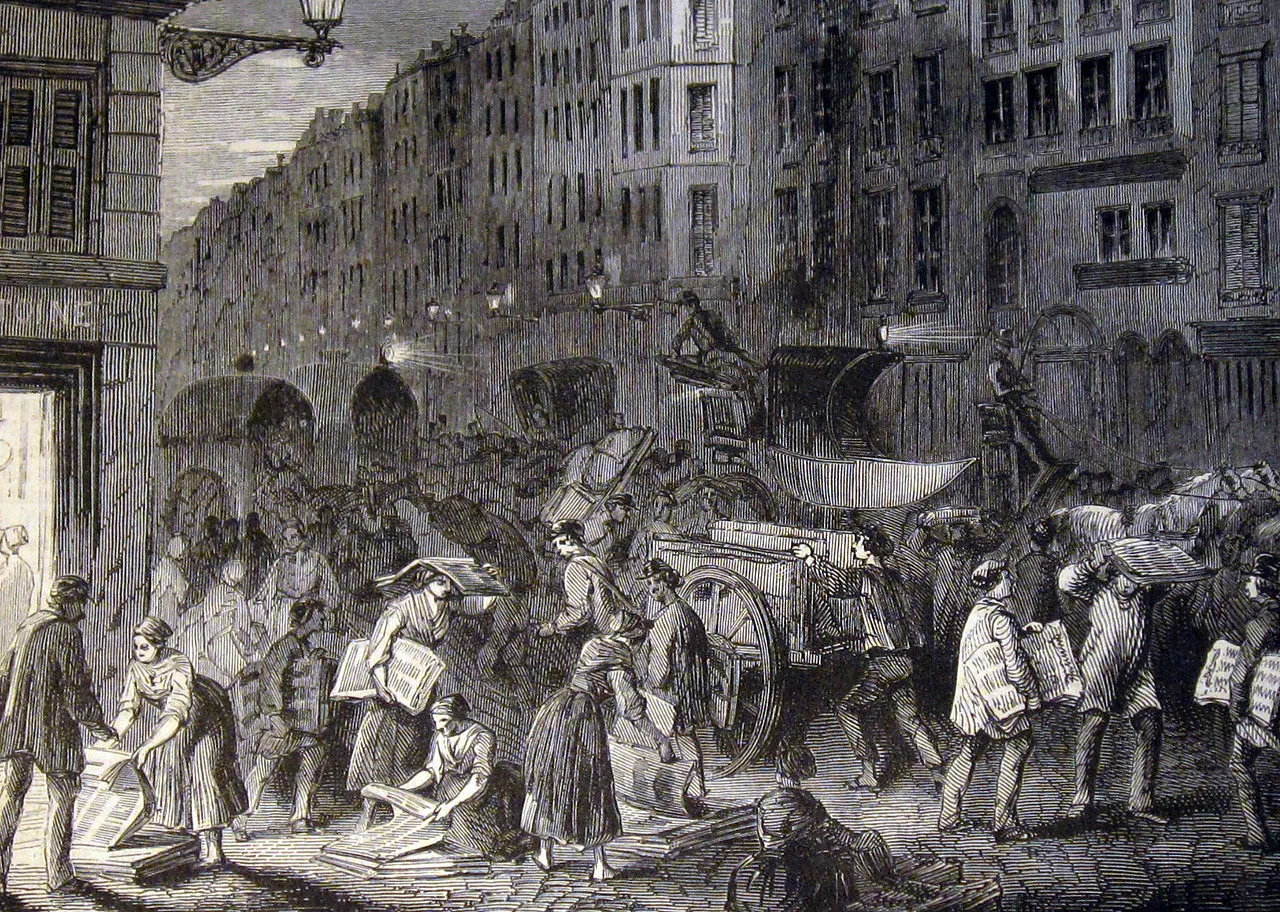
Newspaper being packed for delivery, Paris 1848
The modern newspaper is a European invention. The oldest direct ancestors of the modern newspaper were the handwritten news sheets that circulated widely in Venice as early as 1566. These weekly news sheets were filled with information on wars and politics in Italy and Europe. The first printed newspapers were published weekly in Germany from 1609. Typically they were heavily censored by the government and reported only foreign news, and current prices. After the English government relaxed censorship in 1695, newspapers flourished in London and a few other cities including Boston and Philadelphia. By the 1830s high speed presses could print thousands of papers cheaply, so low cost daily papers appeared in major cities. Most had political sponsors, but by 1900 advertising revenues became more important than party support. In New York City newspaper wars pushed circulation to the level of a million copies a day. In England and Scotland the tendency was for national newspapers to dominate sales. The rise of radio in the 1930s had a small impact but television from the 1950s onward undercut the audience. Afternoon papers could barely survive. The rise of the internet after 2000 and smart phones after 2010 proved financially crippling to morning papers as advertisers deserted, and subscriptions plunged.